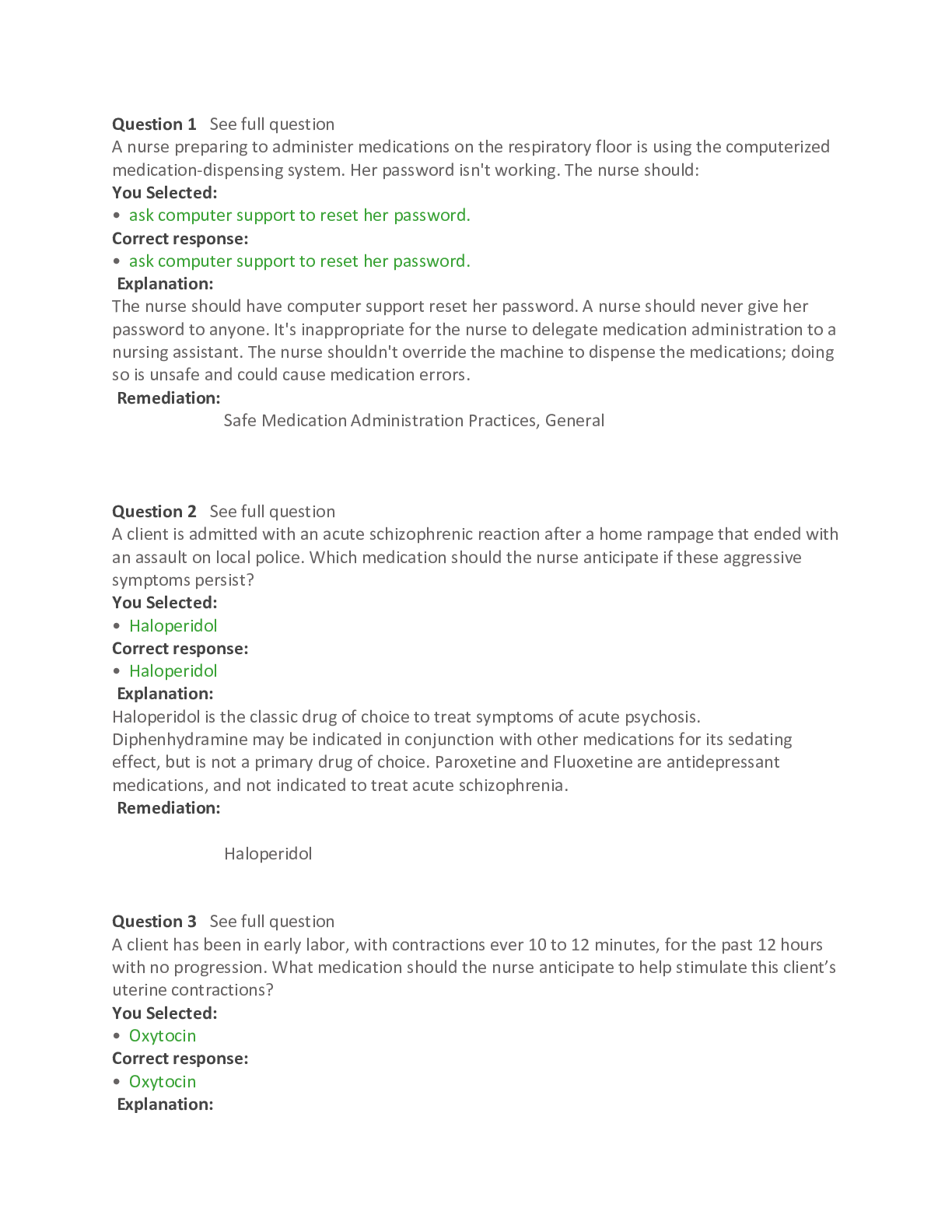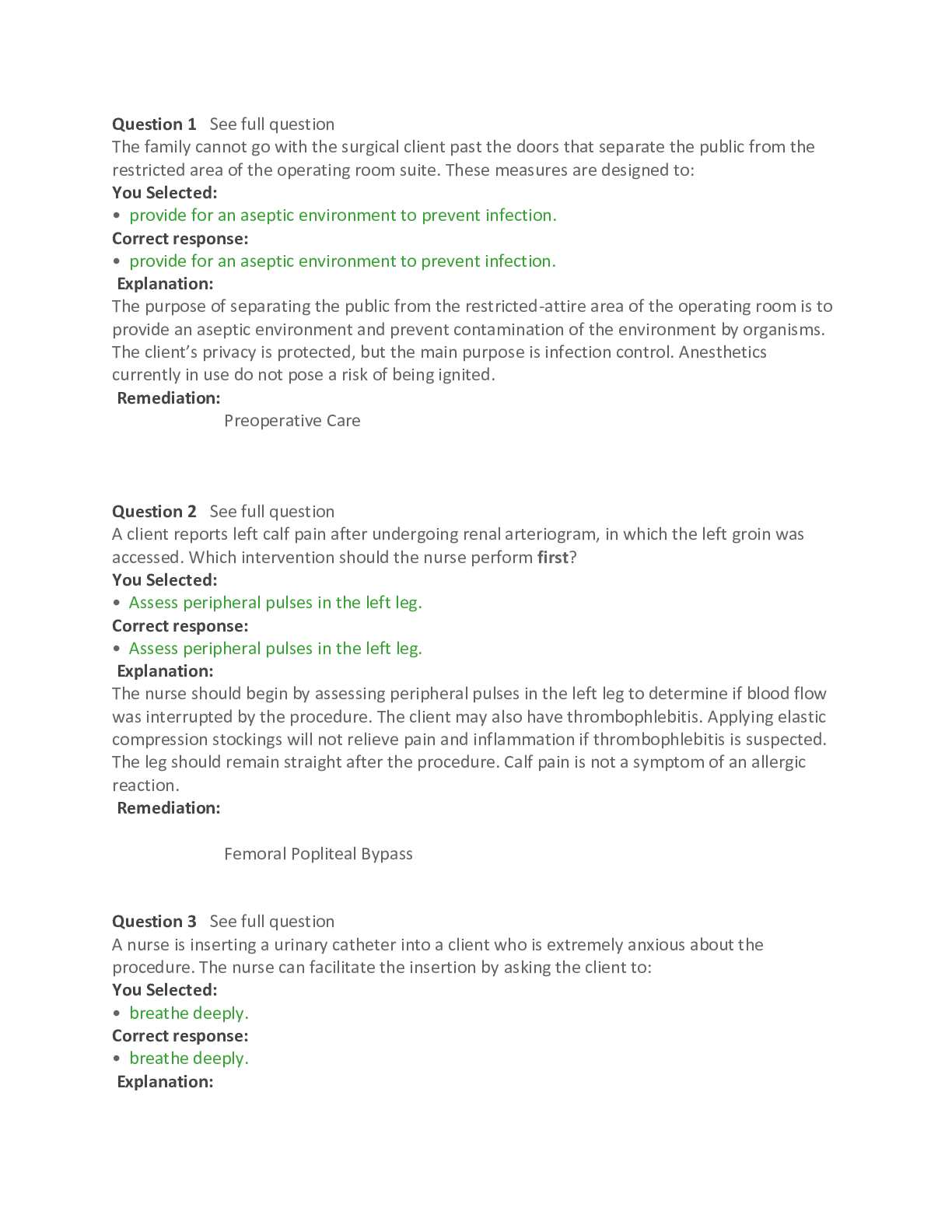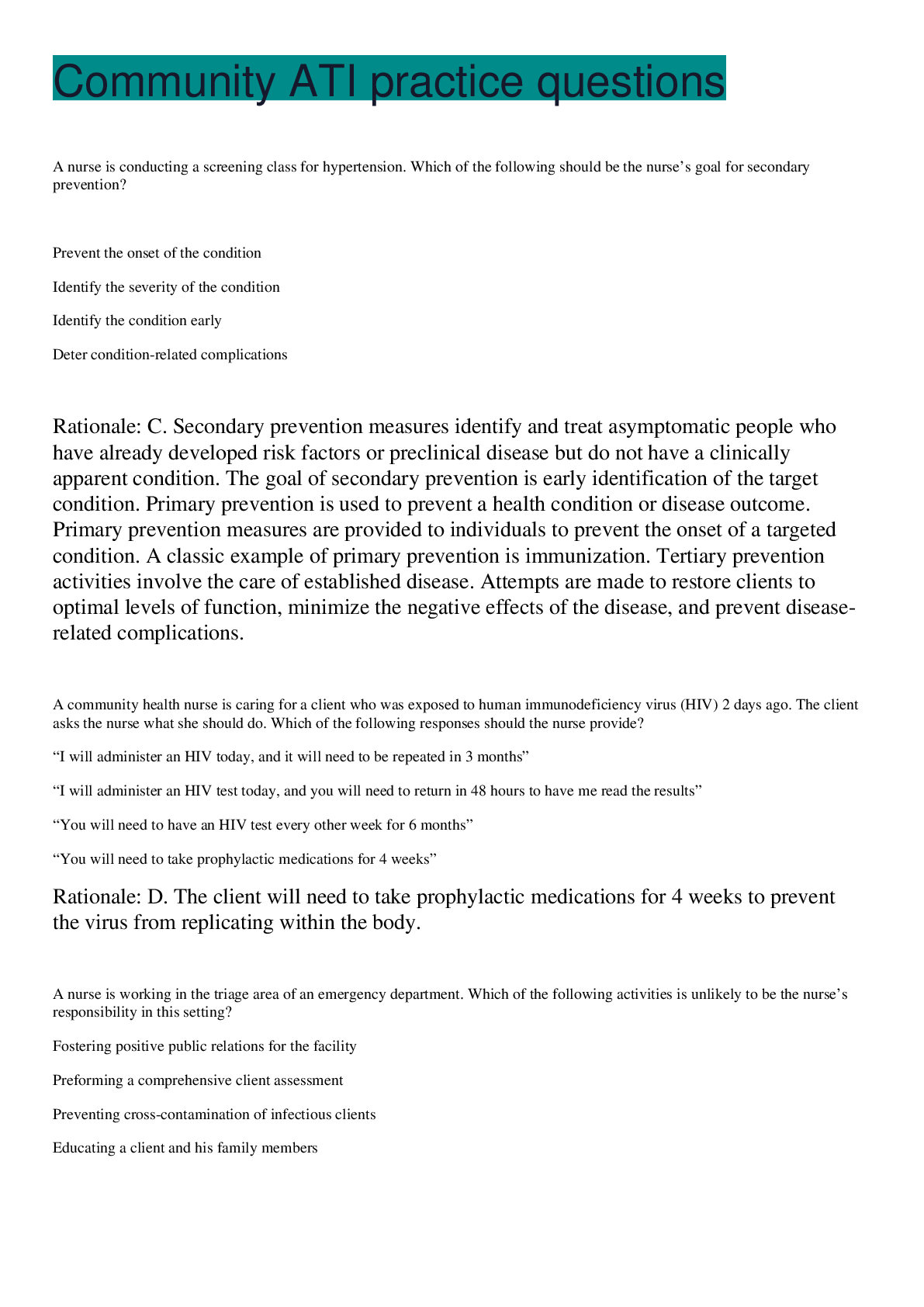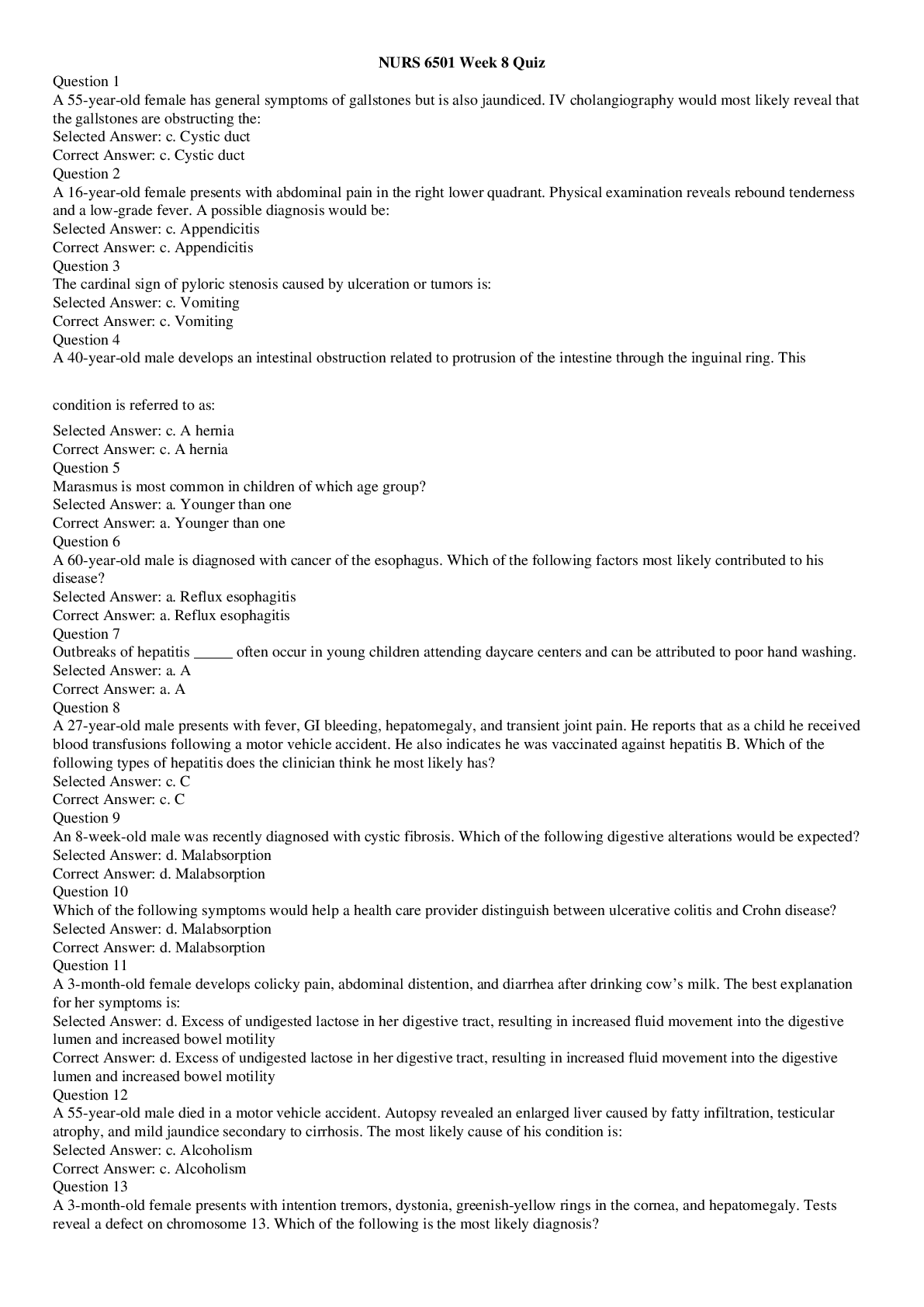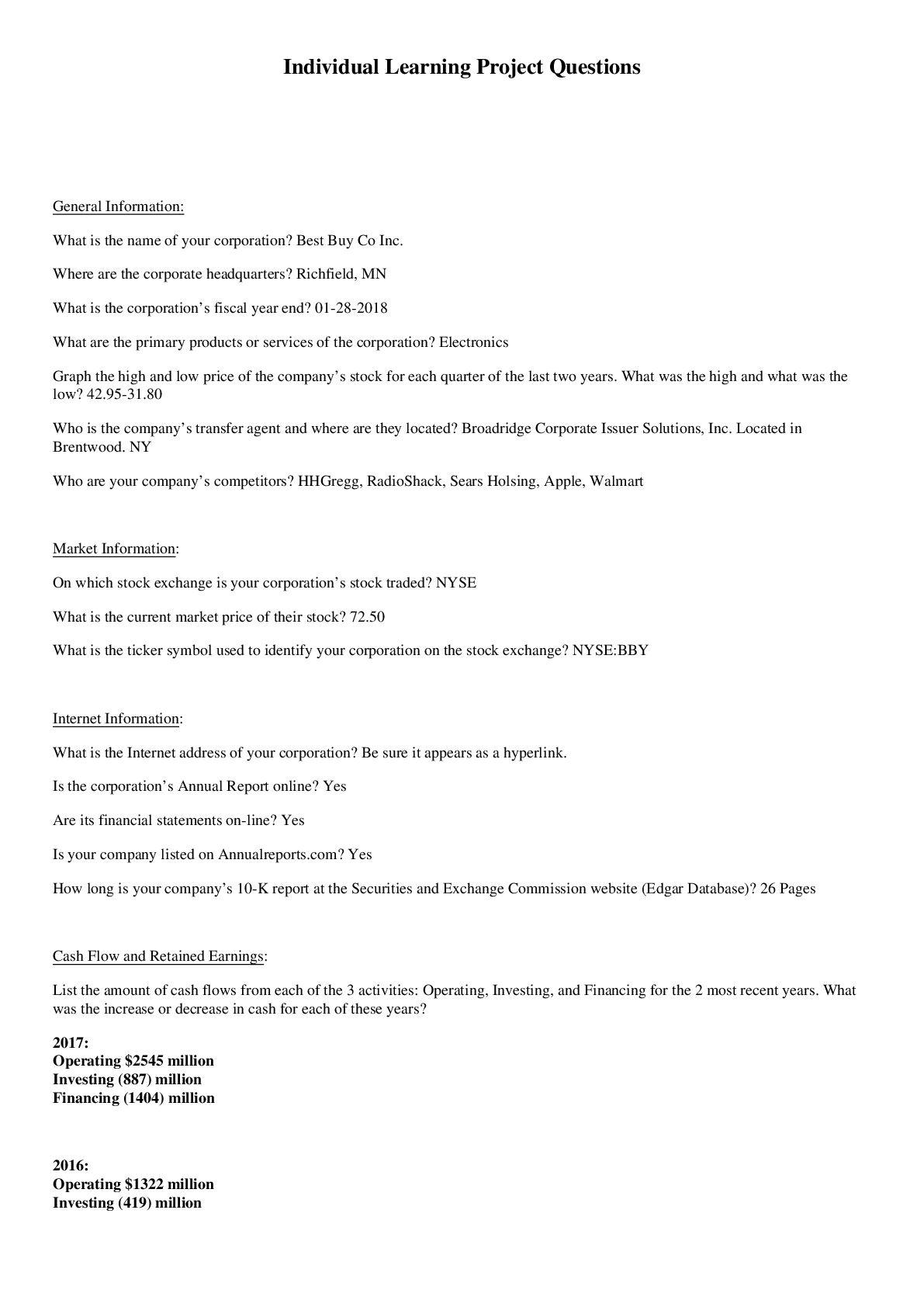*NURSING > STUDY GUIDE > Primary Concepts of Adult Nursing Test Autumn 2019, questions and answers (All)
Primary Concepts of Adult Nursing Test Autumn 2019, questions and answers
Document Content and Description Below
•Guidelines for Prioritization, Delegation, and Assignment Decisions Definitions Prioritization • Delegation • Assignment Four P’s of Prioritization Prioritization Criteria • Is it li... fe threatening or potentially life threatening if the task is not done? • Will there be a safety issue? Would another patient be endangered if I do this now or leave this task for later? Levels of Priority Setting Activity 1 • You are taking morning report from the night shift registered nurse, of the following 4 patients on you assignment, what is the order in which you will assess and evaluate them. Please describe your rationale. o The patient with a history of type 2 Diabetes Mellitus with a am blood glucose level of 220 with received insulin and rarely eats breakfast (4) • You are assigned a patient who requires the following assessment and tasks completed. What is the order that you will complete these tasks? o Follow-up on diagnostic testing, including CBC and BMP (1) Delegation and Assignment: Five Rights 1. Right circumstance o Can delegate to RN, LPN, and unlicensed assistance personnel (UAP) Which of the following tasks may be delegated appropriately to an unlicensed assistive personnel ? SELECT ALL THAT APPLY a) Assessment of lung sounds for a patient hospitalized for COPD exacerbation *An unlicensed assistive personnel has been assigned to collect the 0730 routine vital signs on the unit. At 0830, the task has not yet been recorded. Which is the most appropriate response made by the RN? • Did you not remember to do VS I notice the VS have not been collected. Let's discuss this. • Registered Nurse o Practice of professional nursing" means the performance of those acts requiring substantial specialized knowledge, judgment, and nursing skill based upon applied principles of psychological, biological, physical, and social sciences which shall include, but not be limited to: Prohibited Tasks for Delegation • Tasks not within the delegating/supervising nurses scope of practice • Nursing activities that include the use of the nursing process and require special knowledge, nursing judgment or skills • Determine nursing care required to meet patient’s needs o How complex is the patient’s required care? o What are the dynamic of patients status and their capability? o How complex is the assessment and ongoing evaluation? o What kind of infection control is necessary? o Are there any individual safety precautions? • Consider knowledge and abilities of staff members • You are working as the shift supervisor on a med-surg unit. You have the 2 RNs who worked yesterday, a float RN from an ICU, and 1RN who has been off for two days. Decide the assignment. Each nurse is assigned 2 patients. Managing Chronic Conditions • Importance of prevention: Questions to Ask to Ensure Quality Care • Does patient require or prefer special accommodations? • Are special accommodations made to communicate with patient? o If they don’t speak the same language, do they need an interpreter, services are available within the facilities Health Promotion: Patient Teaching Considerations • Learner needs, motivation, and style of learning An older adult diagnosed with anemia begins to complain of dyspnea on exertion while ambulating. Which action should the nurse complete first? • Monitoring/managing Complications o Teach them about complications, signs & symptoms to look out for, and how to deal with them Evaluation: General Anemia A patient with anemia is complaining of fatigue that makes it difficult to perform Activities of Daily Living (ADLs). Which of the following nursing diagnoses is most appropriate? Generalized Approach to Bleeding Disorders • Medical Management *A nurse is providing education to a client with a bleeding disorder. Which of the following interventions indicate that the client needs additional teaching? o Measures to minimize bleeding (see Chart 15-7 in Chapter 15) *Which of the following is the priority nursing diagnosis for a patient with thrombocytopenia? Risk for injury Immune Thrombocytopenic Purpura (ITP) • Affects all ages but more common in children & young women • Primary ITP occurs in isolation, do not know the actual cause of disease • Anticoagulant Therapy Complications o Warfarin is an anticoagulant that has an antidote of Vit K Which of the following tasks may be delegated to an unlicensed assistive personnel for a patient on Warfarin with an INR of 3.8? Transfusion: Pretransfusion Assessment • Patient history o Previous transfusions/reactions • Physical assessment o Base-line VS = PCA can get this but you might prefer to do them yourself Transfusion: Pretransfusion Education • Risks and benefits and what to expect during/after transfusion • Signs/Symptoms of transfusion reaction if any of these occur STOP!! Transfusion: Types of Complications • Febrile non-hemolytic reaction Complications of Transfusion • Febrile Non-hemolytic RX o Caused by antibodies to donor leukocytes • Transfusion-Related Acute Lung Injury o Potentially fatal Pharmacologic Alternatives to Transfusions • Growth Factors • Erythropoietin * The client receiving a unit of PRBCs begins to complain of chills and low back pain. Which action should be the nurse's first response? a) Notify the laboratory and health care provider. * Which of the following tasks are appropriate to delegate to an unlicensed assistive personnel on the unit? * A nurse is teaching a class on cancers to a group of older adults. In discussing leukemia, which of these would the older adult population be at greatest risk for? a) Acute myeloid *When a patient who is undergoing chemotherapy has a nursing diagnosis of risk for bleeding which of these assessment findings should be reported immediately? SELECT ALL THAT APPLY o Infection is the leading cause of death for this disease, due to immature WBC and Chemotherapy, must contact HCP immediately if fever Lymphoma • Neoplasms of cells of lymphoid origin • Start in lymph nodes tissues but can involve lymphoid tissue of spleen, GI tract, liver or bone marrow Lymphoma: Pathophysiology • Hodgkin o Originates in a single node o Spreads by contiguous extension along the lymphatic system o Reed-Sternberg cells, have a large nucleus seen through a biopsy Lymphoma: Clinical Manifestations • Hodgkin o Enlargement of one or more nodes on the side of the neck, above the diaphragm Lymphoma: Medical Management • Hodgkin • Malignant disease of the most mature form of B lymphocyte—the plasma cell; second most common hematologic cancer in US Primary Polycythemia Vera • Proliferative disorder of the myeloid stem cells Cancer Treatment Cancer • Abnormal cell proliferation, cell transformed by a genetic mutation could be environmental or genetic • Dosage/Administration o Depends on target tissue sensitivity o External beam (EBRT): common type of therapy with imaging modules and beam radiation at Radiation Therapy Toxicity • Localized in irradiated region Nursing Management: Radiation Therapy • Goal: Safe delivery and prevention of complications, monitoring tolerance of treatment • Assessments: guided by irradiated area, skin, nutritional status, and feelings of well-being Radiation Therapy: Safety Precautions Hematopoietic Stem Cell Transplantation (HSCT) HSCT: Allogeneic (donor other than patient) HSCT: Autologous & Syngeneic • Autologous (recipient use their own BM) End of Life Care: Hospice • Comprehensive, multidisciplinary approach to care of patients with terminal illness, their families When a patient is neutropenic, which of the following is the priority nursing diagnosis when planning care for this patient? Aplastic Anemia: Clinical Manifestations Aplastic anemia: Diagnostic findings & Medical Management *When a patient is diagnosed with aplastic anemia, the nurse should anticipate that the blood count would reveal which of the following? SELECT ALL THAT APPLY Aplastic anemia: Nursing management • Administer transfusion therapy Neutropenia: Diagnostics & manifestations • Absolute neutrophil count (ANC) = 3000-7000 [Show More]
Last updated: 1 year ago
Preview 1 out of 50 pages
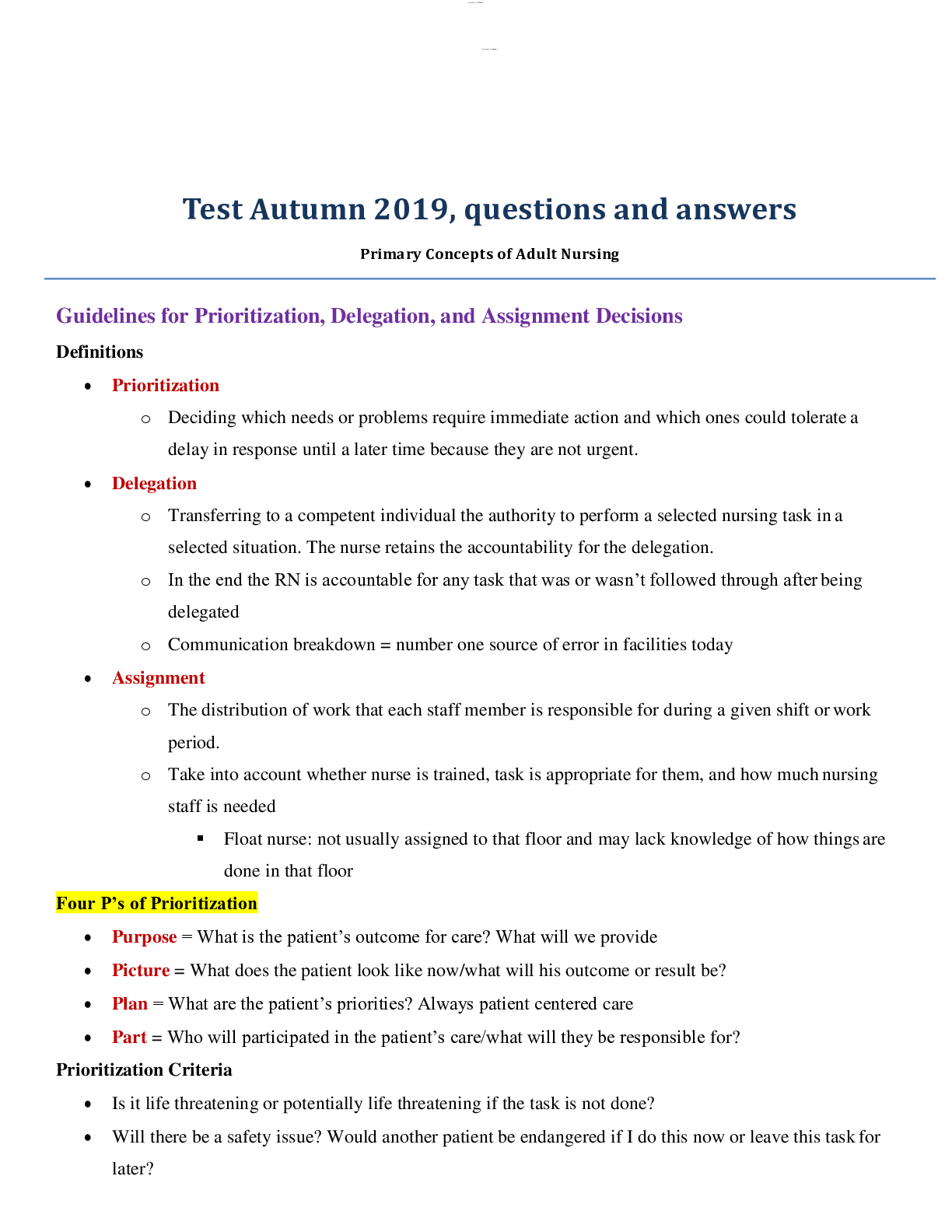
Reviews( 0 )
Document information
Connected school, study & course
About the document
Uploaded On
Apr 23, 2020
Number of pages
50
Written in
Additional information
This document has been written for:
Uploaded
Apr 23, 2020
Downloads
0
Views
60


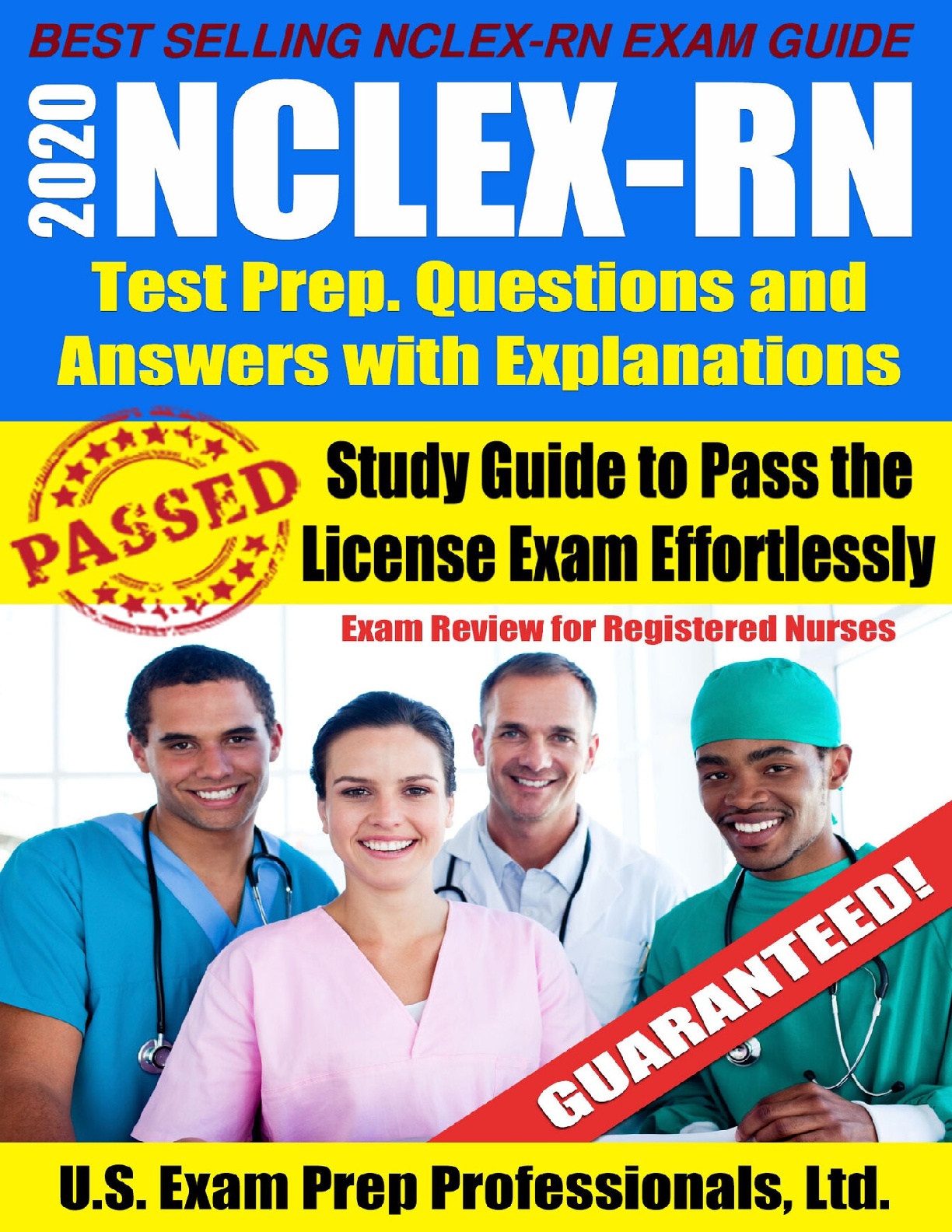

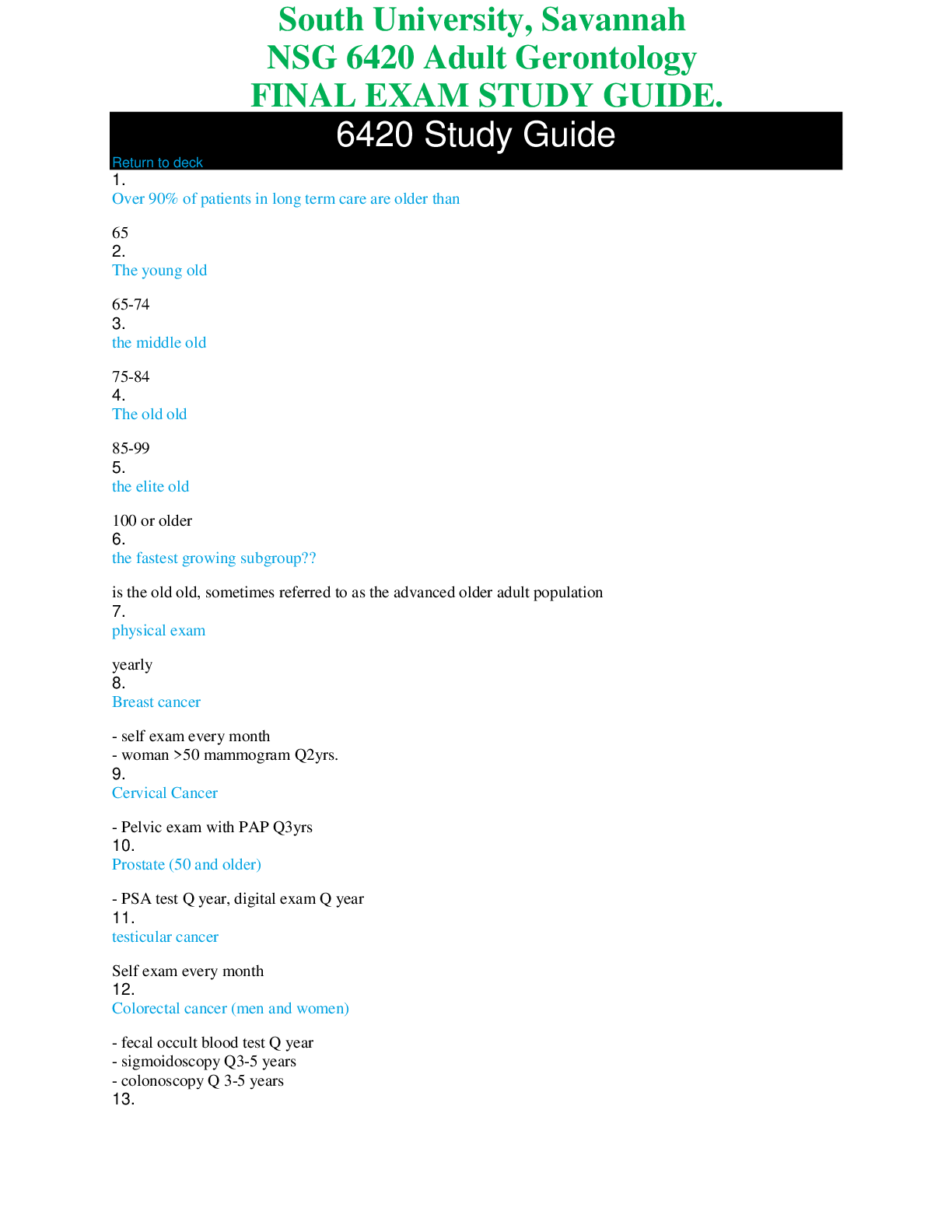

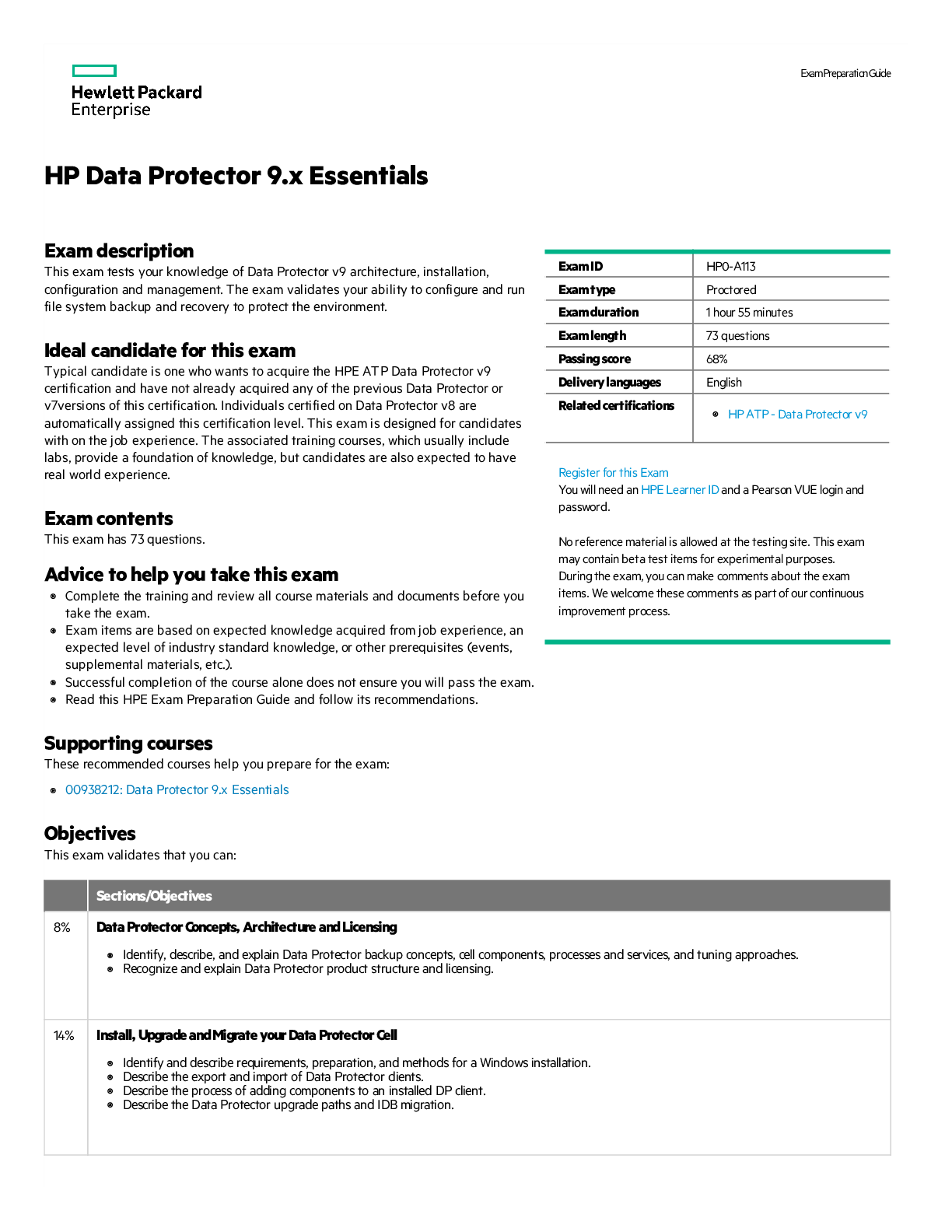



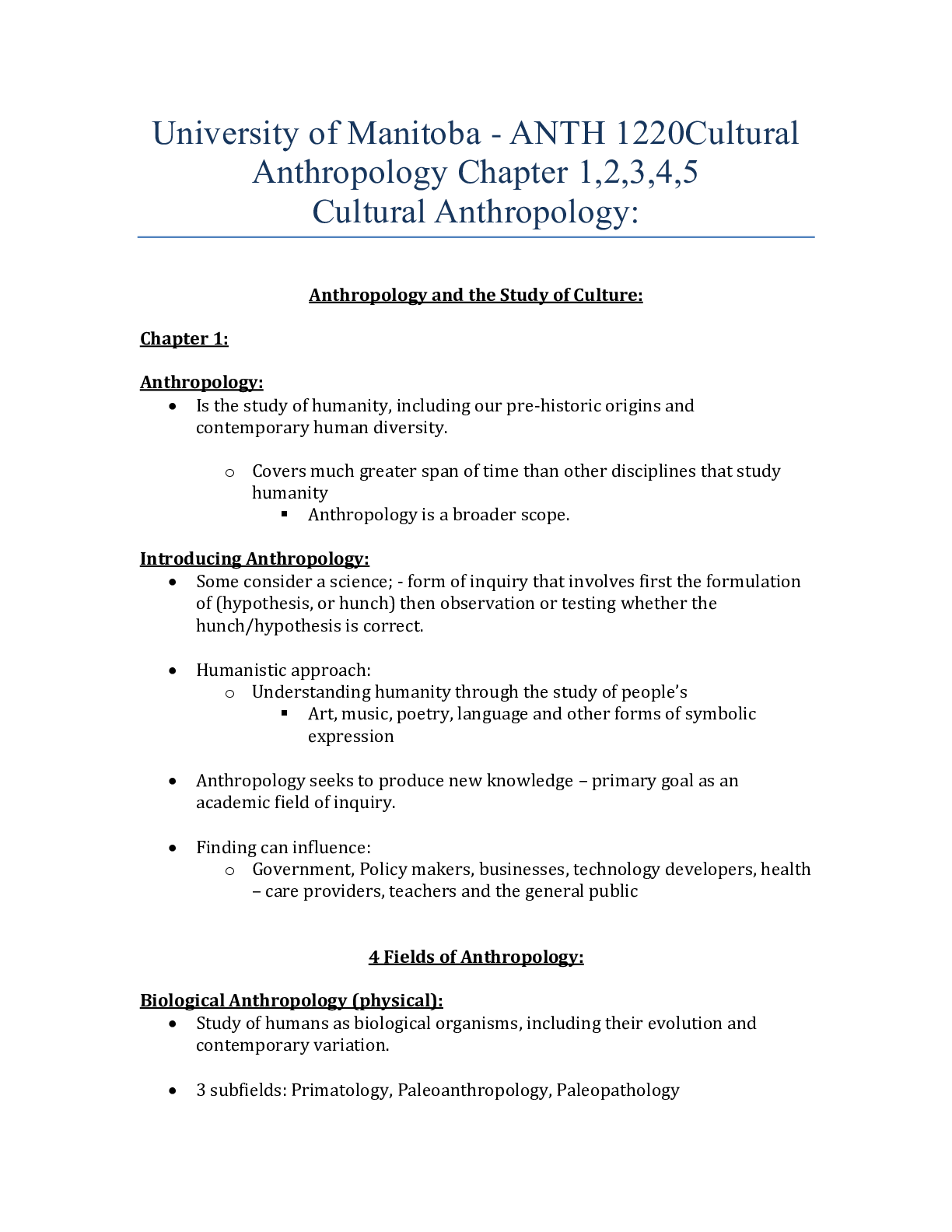


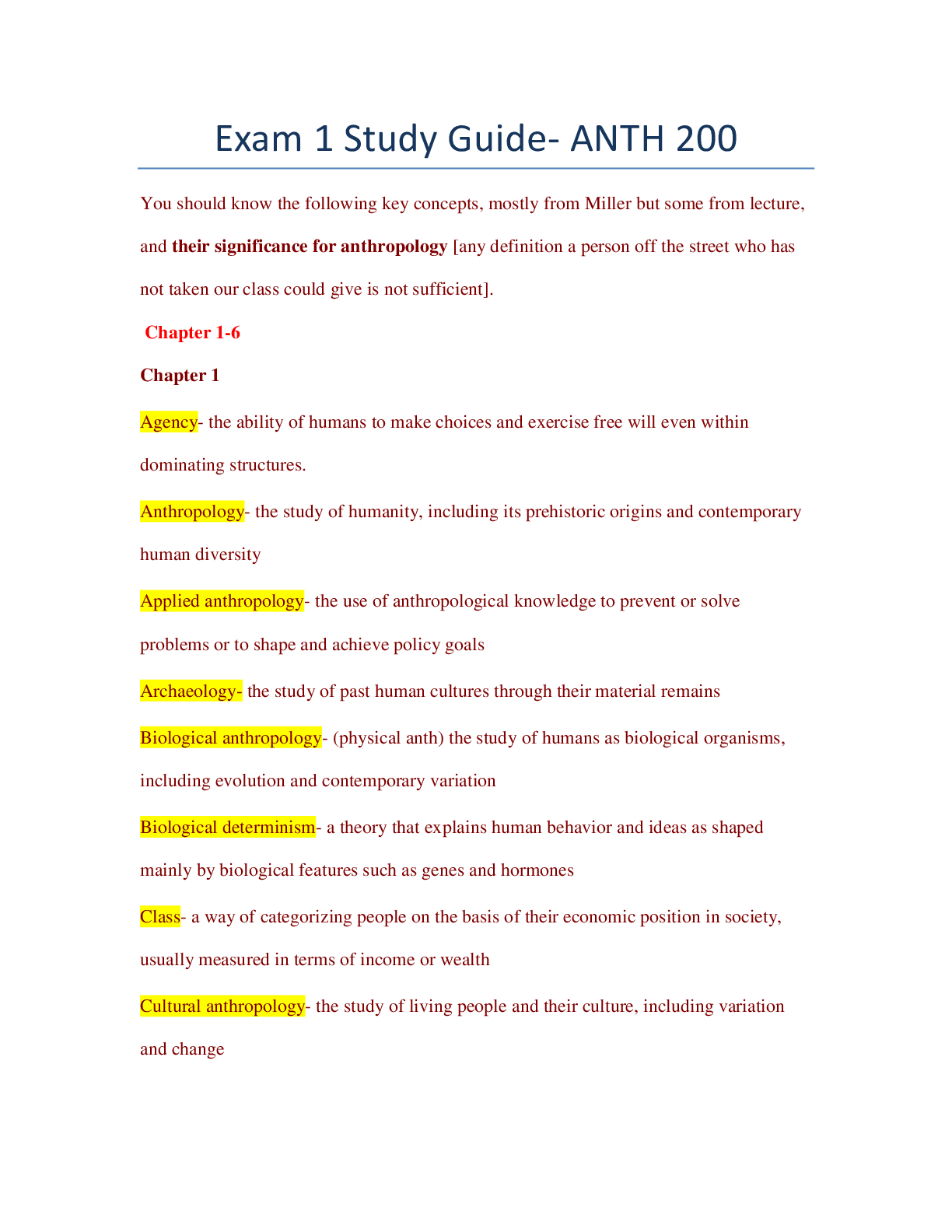

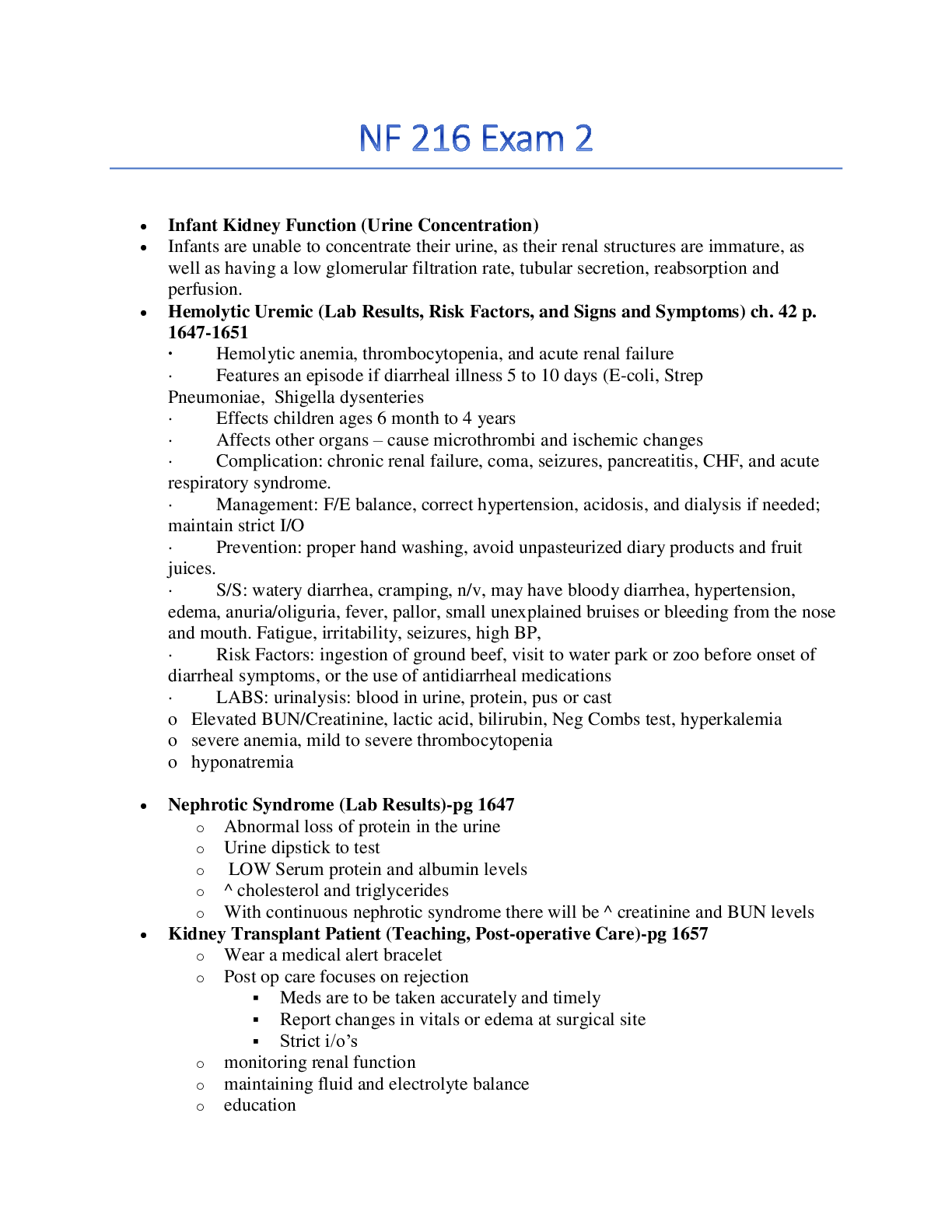
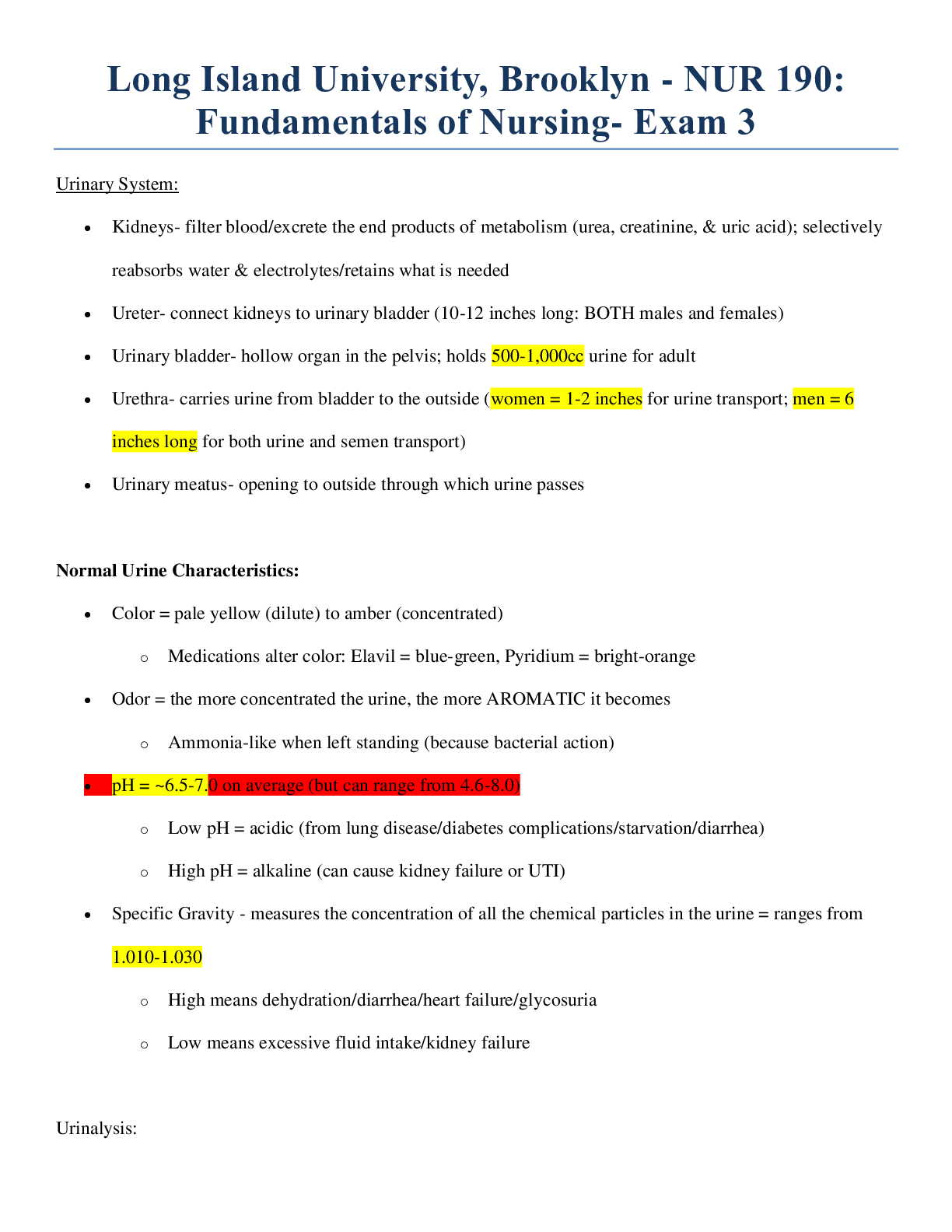




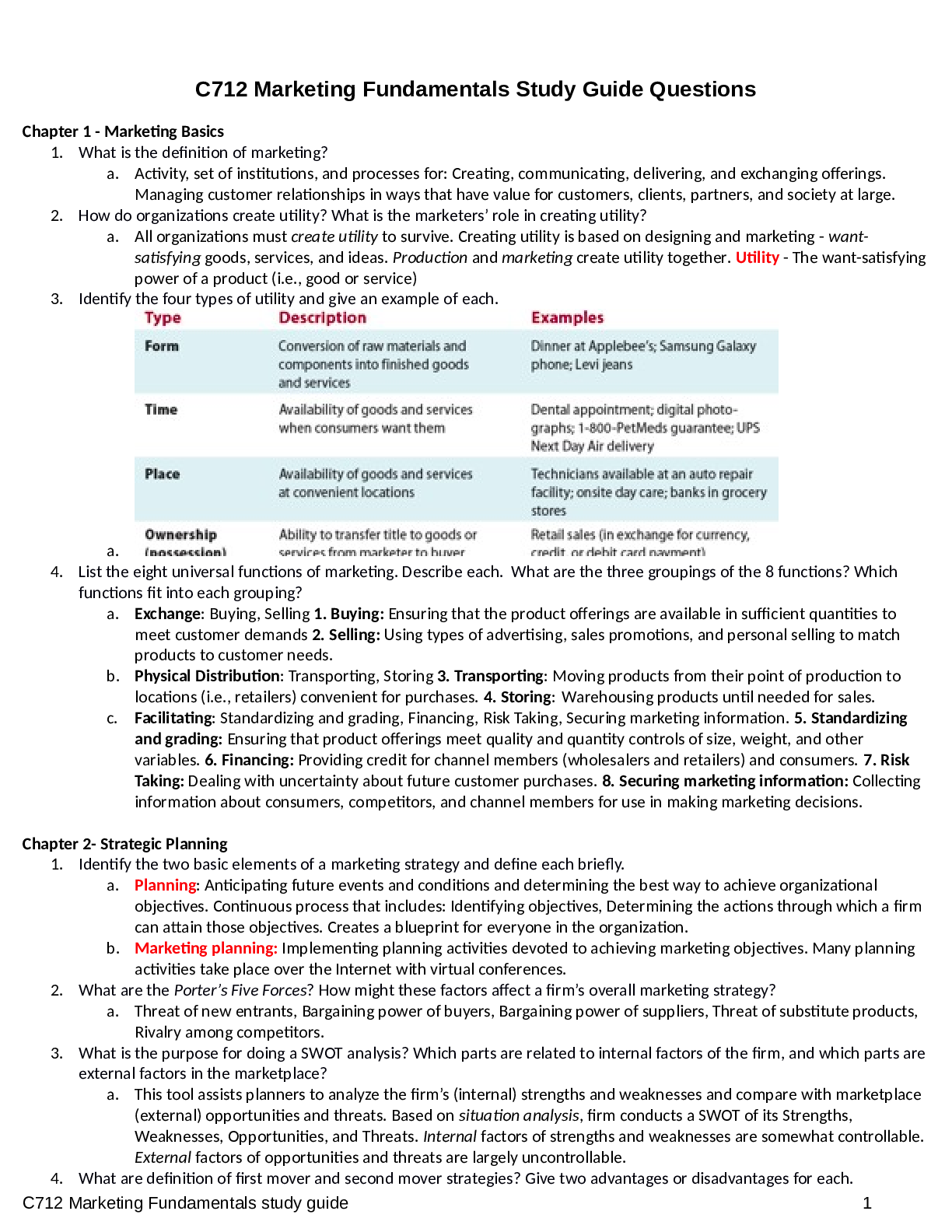
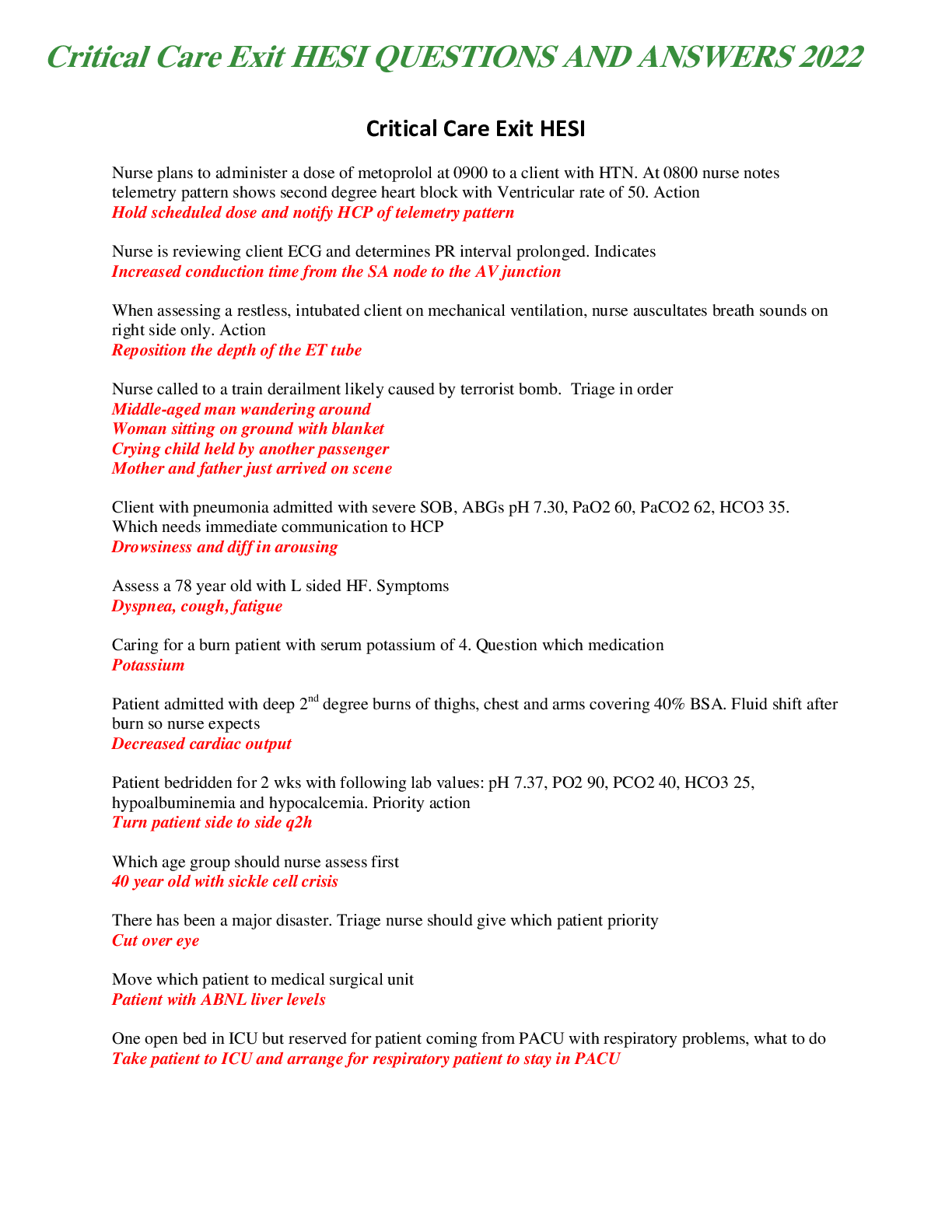

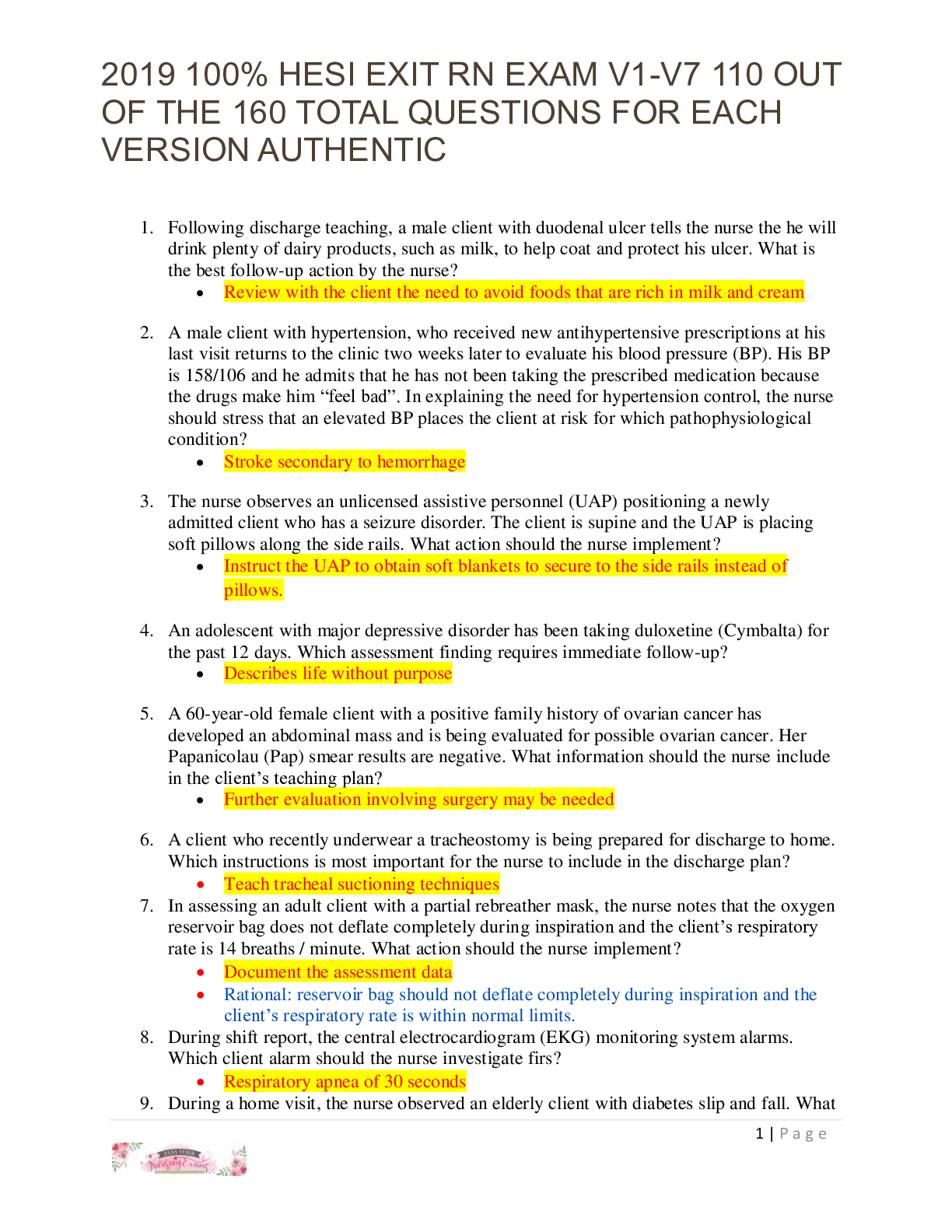

.png)
